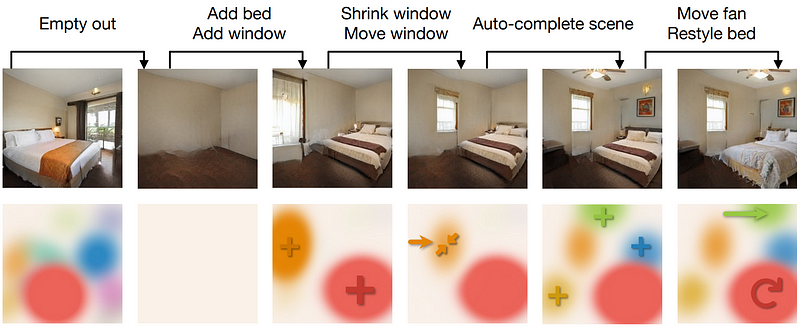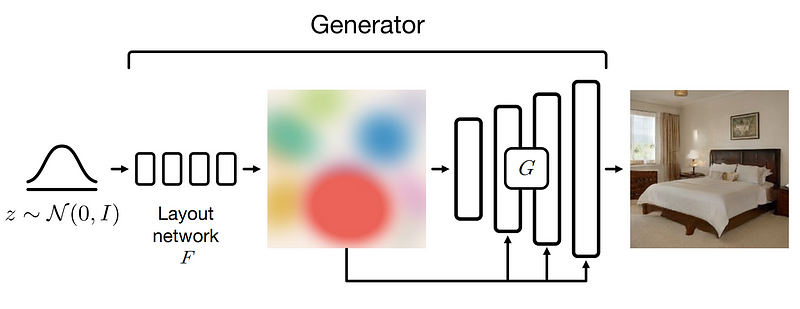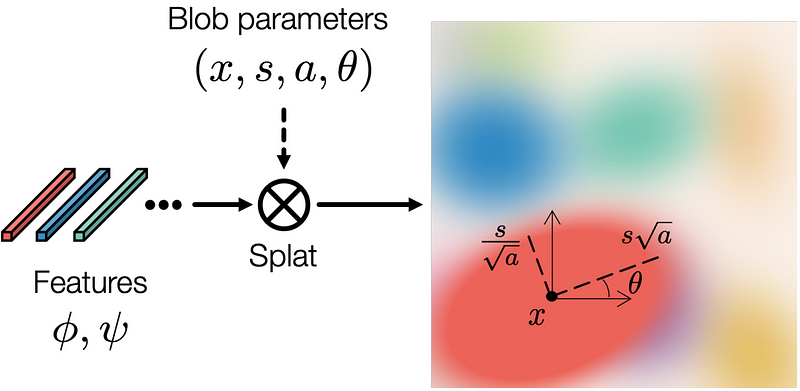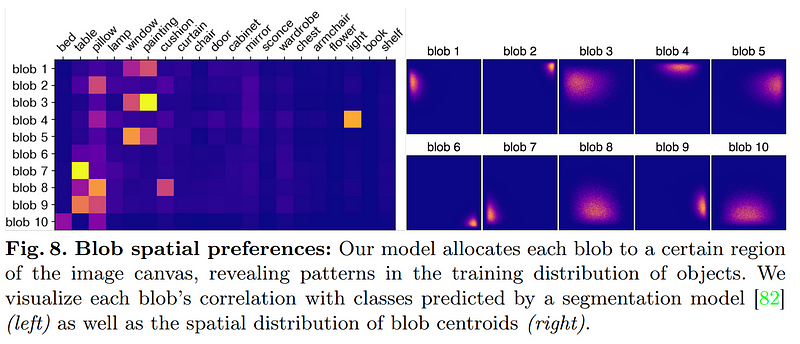This is a BIG step for GANs! BlobGAN Explained
A GAN model that uses simple blobs to manipulate objects in images…

If you think that the progress with GANs was over, you couldn’t be more wrong. Here’s BlobGAN, and this new paper is just incredible.
BlobGAN allows for unreal manipulation of images, made super easily controlling simple blobs. All these small blobs represent an object, and you can move them around or make them bigger, smaller, or even remove them, and it will have the same effect on the object it represents in the image. This is so cool!
As the authors shared in their results, you can even create novel images by duplicating blobs, creating unseen images in the dataset like a room with two ceiling fans! Correct me if I’m wrong, but I believe it is one of, if not the first, paper to make the modification of images as simple as moving blobs around and allowing for edits that were unseen in the training dataset.
And you can actually play with this one compared to some companies we all know! They shared their code publicly and a Colab Demo you can try right away. Even more exciting is how BlobGAN works, which we will dive into in a few seconds.
Take a look at the results:
Now that you’ve seen some results in the video or simply the gif above, let’s get back to our paper, BlobGAN: Spatially Disentangled Scene Representations.
The title says it all, BlobGAN uses blobs to disentangle objects in a scene.
Meaning that the model learns to associate each blob with a specific object in the scene, like a bed, window, or ceiling fan. Once trained, you can move the blobs and objects around individually, make them bigger or smaller, duplicate them or even remove them from the picture. Of course, the results are not entirely realistic, but as a great person would say, "imagine the potential of this approach two more papers down the line".

What’s even cooler is that this training occurs in an unsupervised scheme. This means that you do not need every single image example to train it, as you would in supervised training. A quick example is that supervised training would require you to have all the desired manipulations in your image dataset to teach blobs to learn those transformations. Whereas in unsupervised learning, you do not need this extensive data, and the model will learn to achieve this task by itself, associating blobs to objects on its own without explicit labels.
We train the model with a generator and a discriminator in a GAN fashion. I will simply do a quick overview as I’ve covered GANs in numerous videos. As always in GANs, the discriminator’s responsibility is to train the generator to create realistic images. The most important part of the architecture is the generator with our blobs and a StyleGAN2-like decoder. I also covered StyleGAN-based generators in other videos if you are curious about how it works.

But, in short, we first create our blobs. This is done by taking random noise, as in most generator networks, and mapping it into blobs using a first neural network. This will be learned during training. Then, you need to do the impossible: take this blob representation and create a real image out of it?! This is where the GAN magic happens.

We need a StyleGAN-like architecture to create our images from these blobs. Of course, we edit the architecture to take the blobs we just created as inputs instead of the usual random noise. Then, we train our model using the discriminator to learn to generate realistic images. Once we have good results, it means our model can take on the blob representation instead of noise and generate images.
But we still have a problem. How can we disentangle those blobs and make them match objects?

Well, this is the beauty of our unsupervised approach. The model will iteratively improve and create realistic results while also learning how to represent these images in the form of a fixed number of blobs.

You can see here how blobs are often used to represent the same objects or very similar objects in the scene. Here, you see how the same blobs are used to represent either a window or painting, which makes a lot of sense. Likewise, you can see that light is almost always represented in the fourth blob. Similarly, you can see how blobs are often representing the same regions in the scene, most certainly due to similarities of images in the dataset used for the experiment.
And voilà!
This is how BlobGAN learns to manipulate scenes using a very intuitive blob representation! I’m excited to see the realism of the results improve, keeping a similar approach. Using such a technique, we could design simple interactive apps to allow designers or anyone to manipulate images easily, which is quite exciting.
Of course, this was just an overview of this new paper, and I’d strongly recommend reading their paper for a better understanding and a lot more detail on the approach, implementation, and tests they did.
As I said earlier in the article, they shared their code publicly and a Colab Demo you can try right away. All the links are in the description below.
Thank you for reading until the end, and I will see you next week with another amazing paper! Feel free to comment under my video or join our community on Discord and share your projects there, it’s called Learn AI Together and I would love to e-meet you there!
Reference
►Watch the video: https://youtu.be/mnEzjpiA_4E
►Epstein, D., Park, T., Zhang, R., Shechtman, E. and Efros, A.A., 2022. BlobGAN: Spatially Disentangled Scene Representations. arXiv preprint arXiv:2205.02837.
►Project link: https://dave.ml/blobgan/
►Code: https://github.com/dave-epstein/blobgan
►Colab Demo: https://colab.research.google.com/drive/1clvh28Yds5CvKsYYENGLS3iIIrlZK4xO?usp=sharing#scrollTo=0QuVIyVplOKu
►My Newsletter (A new AI application explained weekly to your emails!): https://www.louisbouchard.ai/newsletter/
